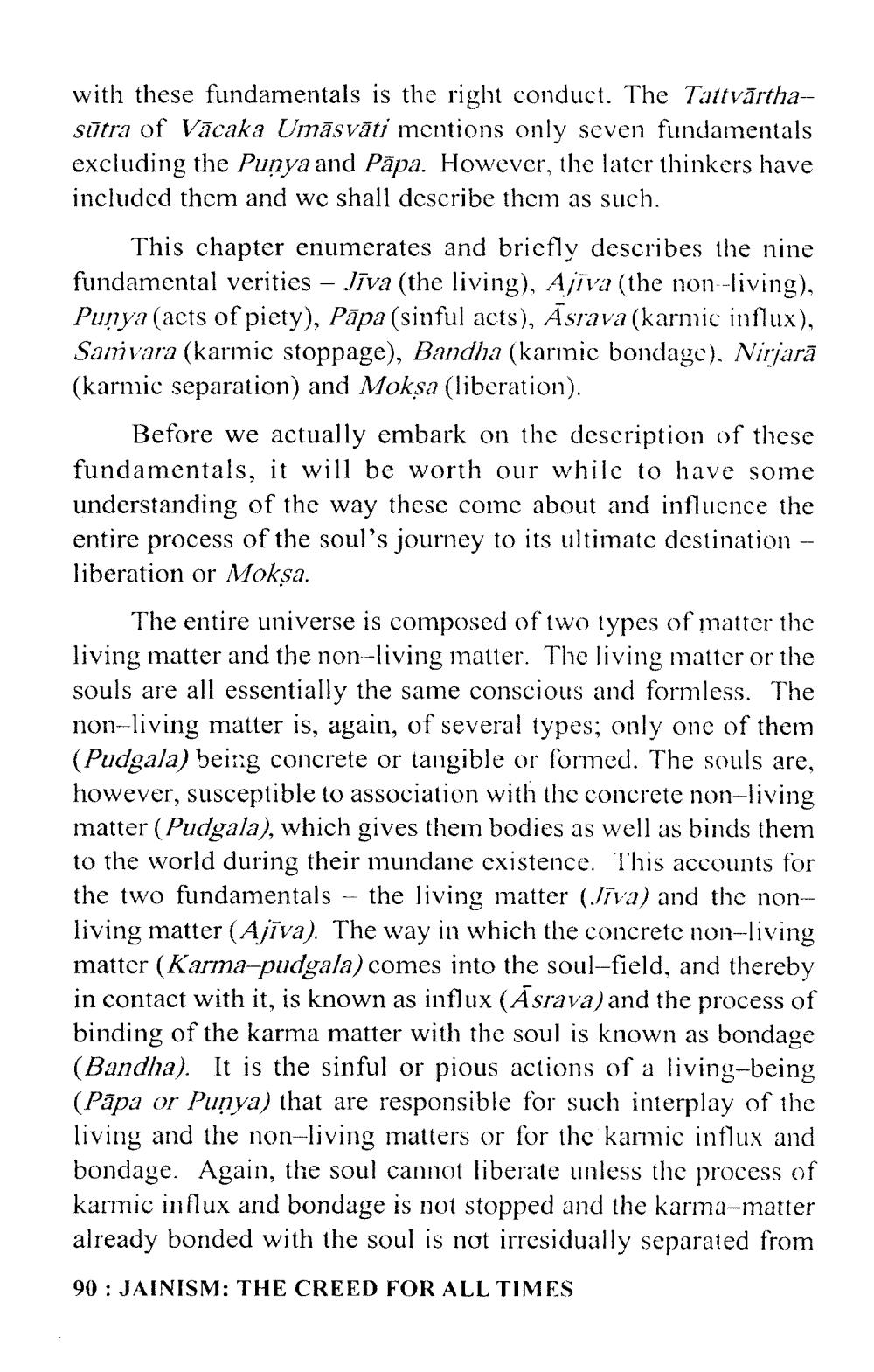________________
with these fundamentals is the right conduct. The Tattvārthasūtra of Vācaka Umāsvāti mentions only seven fundamentals excluding the Punya and Pāpa. However, the later thinkers have included them and we shall describe them as such.
This chapter enumerates and briefly describes the nine fundamental verities - Jīva (the living), Ajīva (the non-living), Punya (acts of piety), Pāpa (sinful acts), Asrava (karmic influx), Sanivara (karmic stoppage), Bandha (karınic bondage). Nirjarā (karmic separation) and Moksa (liberation).
Before we actually embark on the description of these fundamentals, it will be worth our while to have some understanding of the way these come about and influence the entire process of the soul's journey to its ultimate destination - liberation or Moksa.
The entire universe is composed of two types of matter the living matter and the non-living matter. The living matter or the souls are all essentially the same conscious and formless. The non-living matter is, again, of several types; only one of them (Pudgala) being concrete or tangible or formed. The souls are, however, susceptible to association with the concrete non-living matter (Pudgala), which gives them bodies as well as binds them to the world during their mundane existence. This accounts for the two fundamentals - the living matter (Jīva) and the nonliving matter (Ajīva). The way in which the concrete non-living matter (Karma-pudgala) comes into the soul-field, and thereby in contact with it, is known as influx (Asrava) and the process of binding of the karma matter with the soul is known as bondage (Bandha). It is the sinful or pious actions of a living-being (Pāpa or Punya) that are responsible for such interplay of the living and the non-living matters or for the karmic influx and bondage. Again, the soul cannot liberate unless the process of karmic influx and bondage is not stopped and the karma-matter already bonded with the soul is not irresidually separated from 90 : JAINISM: THE CREED FOR ALL TIMES




